






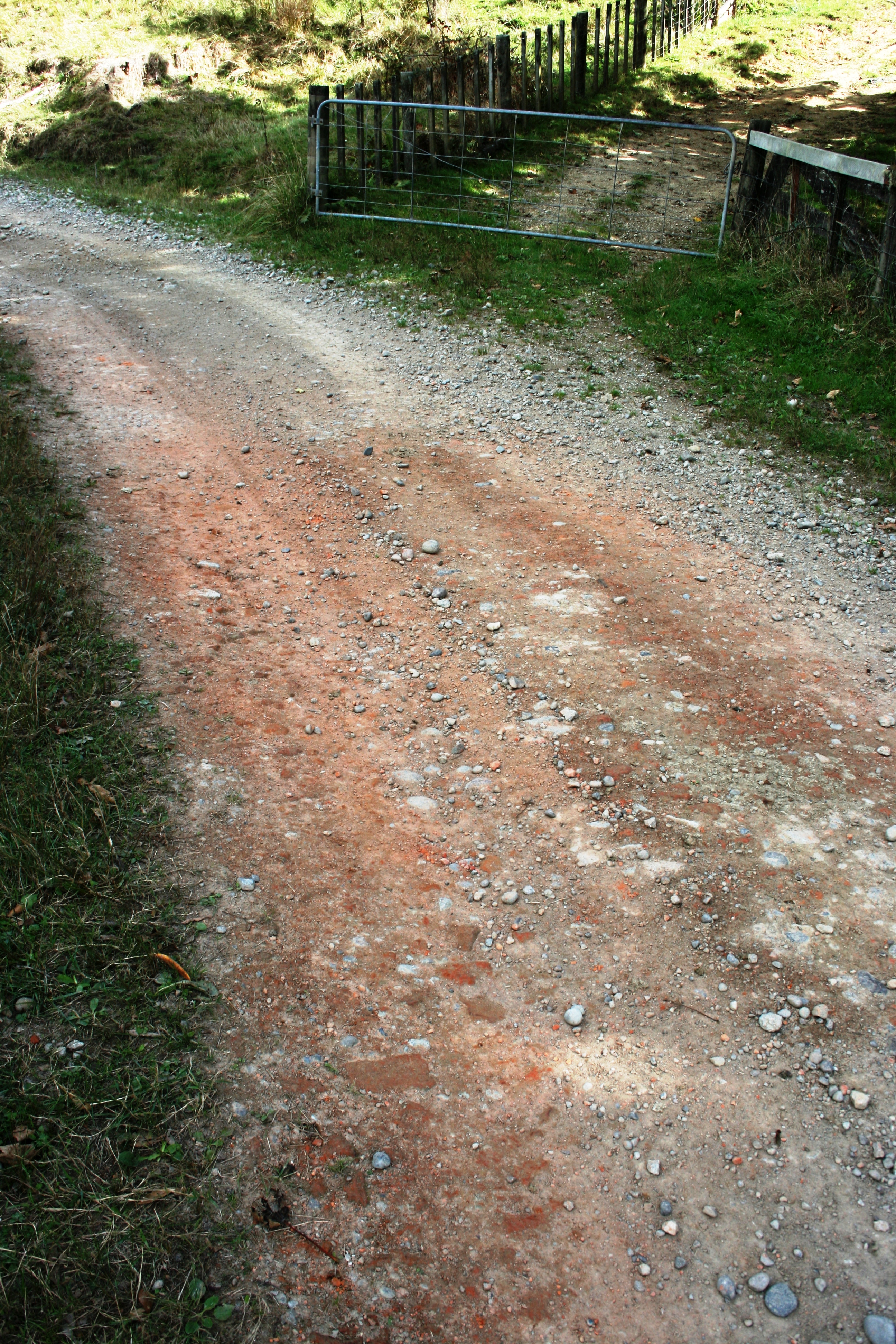
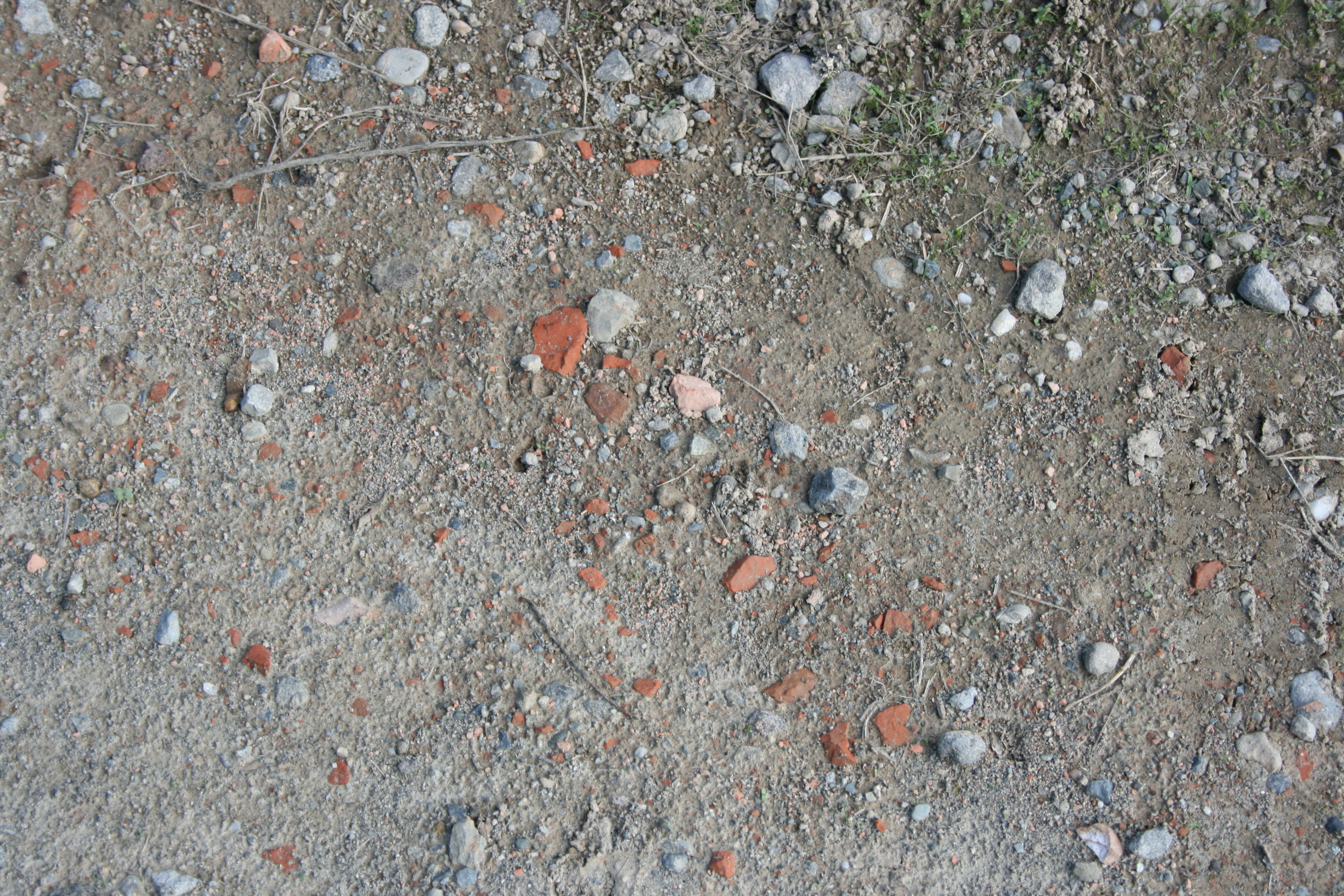

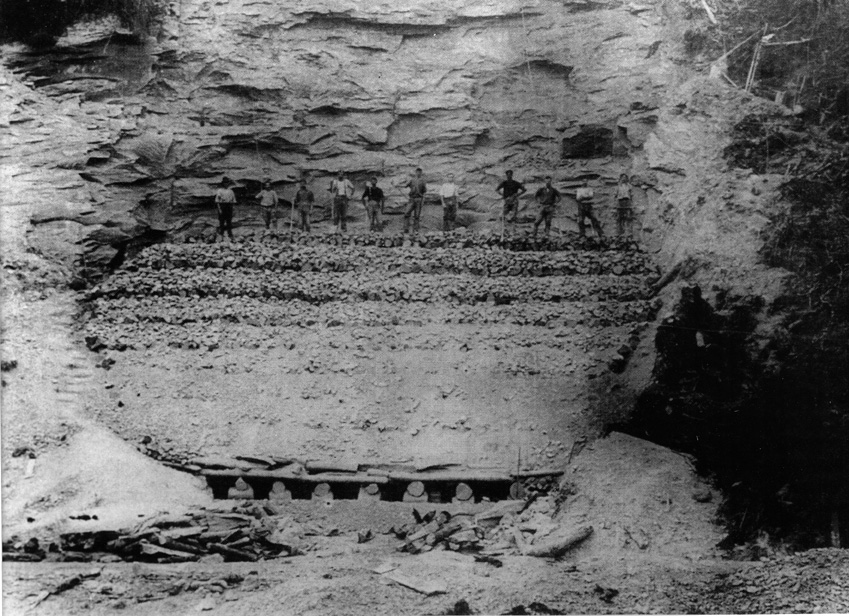
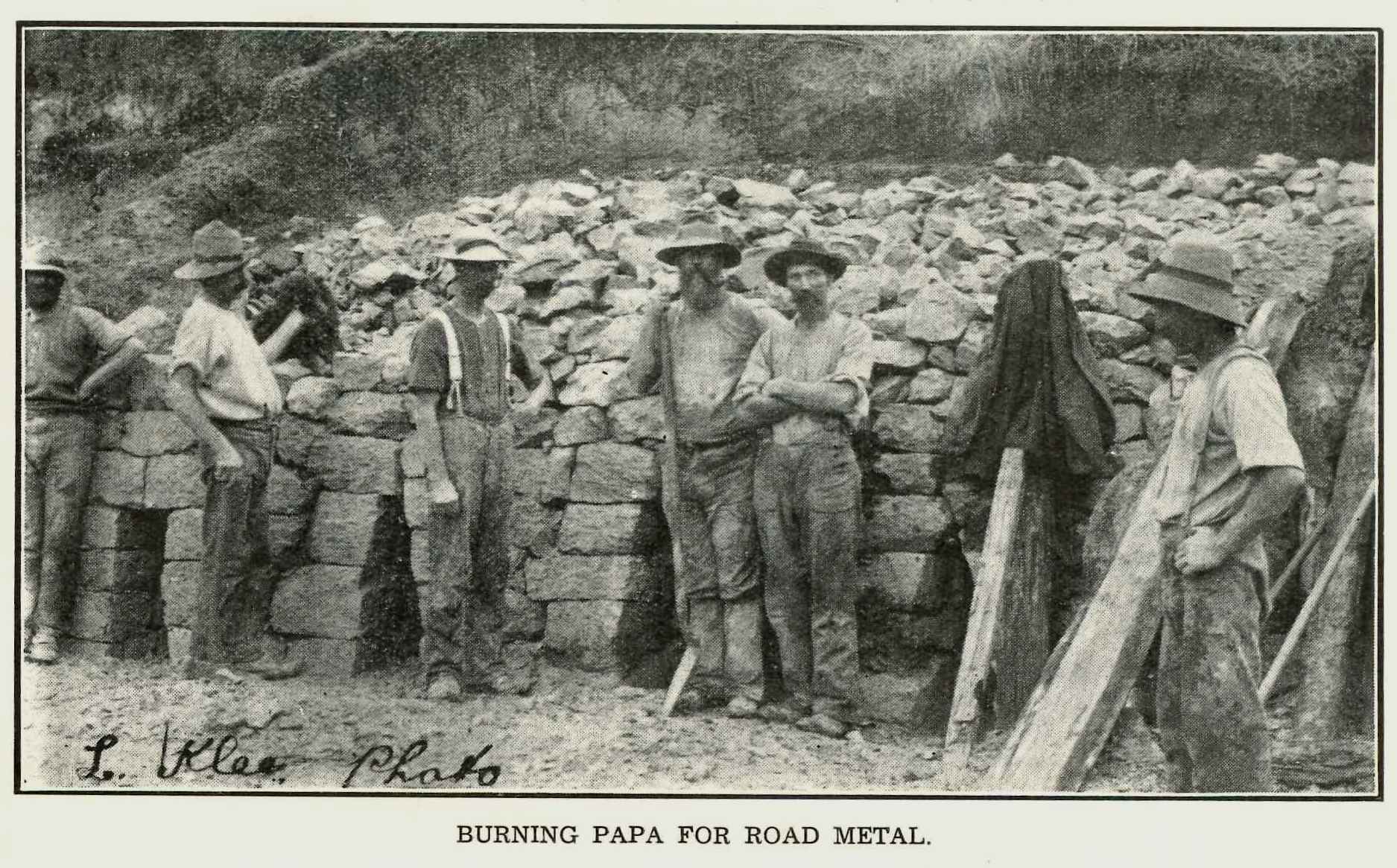
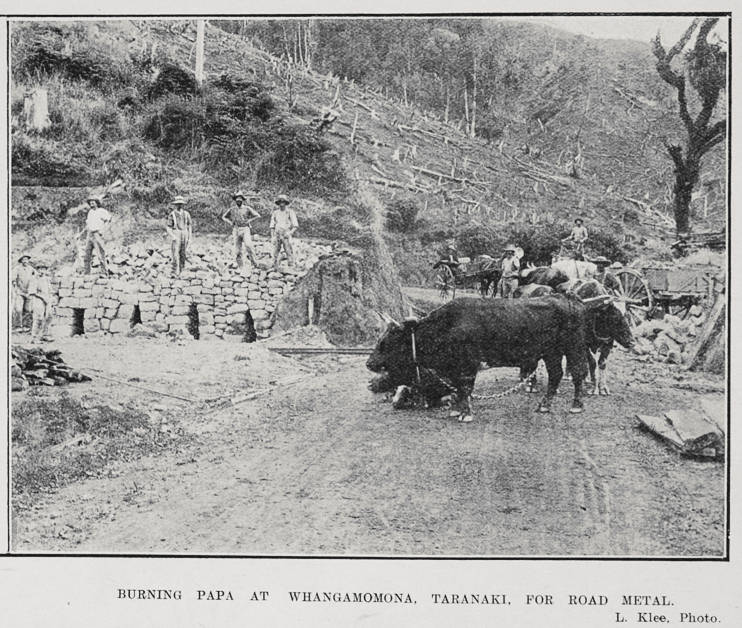
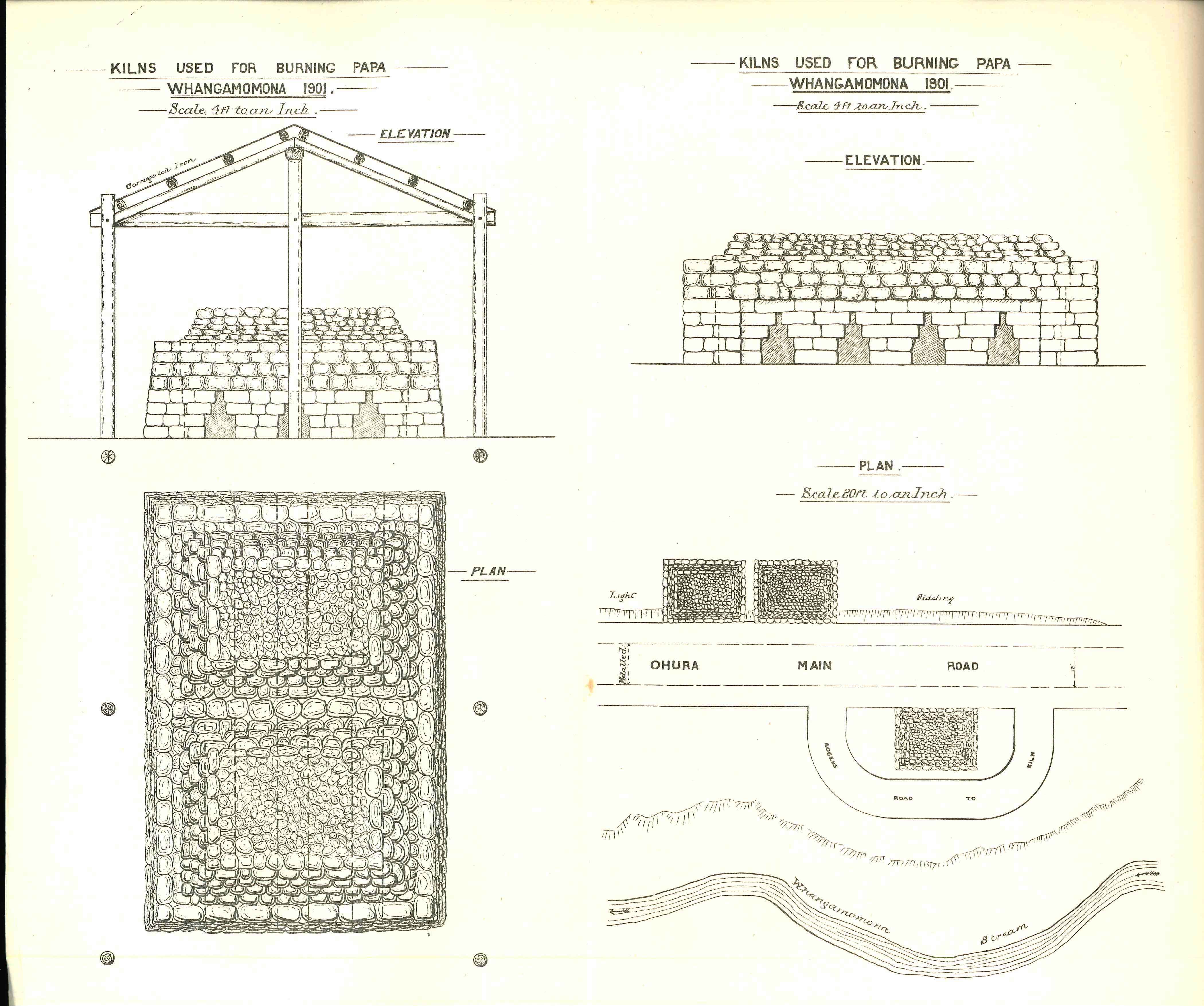
In some areas of Taranaki, there is no suitable rock for roading. In the past, fired papa mudstone provided a cheap and innovative way to surface roads in the area. Papa was converted to brick (sometimes officially called ''paparite') in roadside kilns, and then spread on to the roads.
“Papa burning” was used in the Whangamomona and Ōhura areas, and on Mount Messenger. The technique was introduced about 1896 by William Nathan, the Public Works Overseer at Whangamomona. However, once the railway arrived, gravel was brought in, and papa burning disappeared. The method was also used in the Wairarapa and Northland about the same time.
Small kilns were constructed on the side of the road or on the road itself, while enormous “face kilns” were holes blasted in the side of a papa cliff. They were then built up with alternate layers of timber and clay.
Both types of kiln were then covered with earth before being lit. Firing took several days and the brick-like product was broken up by hand and spread on to the road. Many of Taranaki’s burnt papa road surfaces are now covered with gravel or tarseal, but fragments may still be seen for several hundred metres on Whangamomona Road near the cemetery .
While the most obvious are the red-fired remnants, some papa fired to a dark grey colour.
For a fuller history of papa burning - Taranaki's Red-brick Road. (New Zealand Historic Places Magazine, September 1993. Ron Lambert)
Please do not reproduce these images without permission from Puke Ariki.
Contact us for more information or you can order images online here.